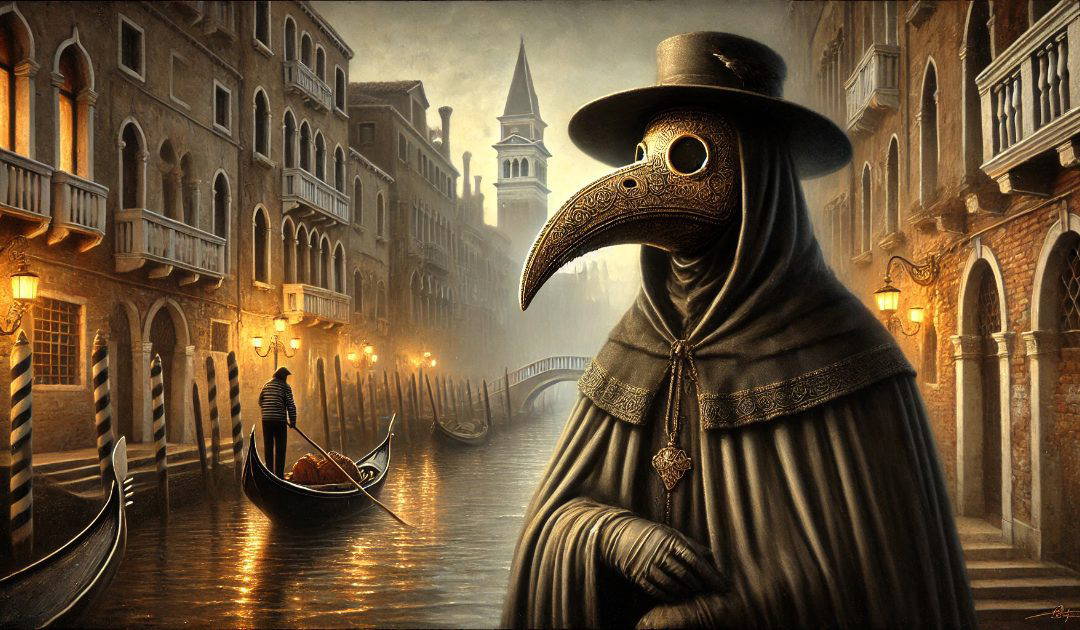By the 30th November 1630, 16,000 inhabitants of Venice had died that month from the plague.
This outbreak, part of the Second Pandemic of bubonic plague, devastated northern and central Italy, including Venice, leaving a lasting impact on the city’s population, economy, and cultural memory.
The 1630 plague arrived in Venice through trade routes and military movements associated with the Thirty Years’ War. It was likely brought from infected regions of northern Italy, particularly Lombardy, which had been severely affected by the plague. The densely populated and heavily interconnected urban environment of Venice made it particularly vulnerable.
The toll of the plague in Venice was staggering. Estimates suggest that the city lost approximately a third of its population, with some 46,000 to 50,000 people perishing out of a population of about 150,000. Neighboring territories under Venetian control suffered similarly, compounding the devastation to the Republic of Venice as a whole.
The Venetian authorities implemented strict quarantine measures in an attempt to contain the outbreak. Venice, a leader in early public health practices, had already established a quarantine system centuries earlier, including the use of isolated islands like Lazzaretto Vecchio and Lazzaretto Nuovo to house the sick and those suspected of infection. Ships arriving in Venice were quarantined, and infected areas were cordoned off. Despite these efforts, the plague overwhelmed the city’s resources.
As the plague ravaged Venice, the population turned to religious devotion in search of solace and intervention. The Venetian Senate vowed to build a church in honor of the Virgin Mary if the plague subsided. This vow led to the construction of Santa Maria della Salute, an iconic Baroque church designed by Baldassare Longhena. The church was completed in 1687 and stands as a testament to the city’s gratitude for its deliverance from the plague.
Venice had suffered plague before, notably in 1575. In The Favourite Murder, my current work in progress, Sir Anthony Standen assumes an alias as a Venetian, and says that he lost his family in the plague of 1575, which is why he ended up in Paris. I have written 93,000 words so far, so this fifth book in the Sir Anthony Standen Adventures is set to be by far the longest, and hopefully, the best yet.

